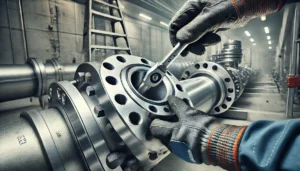The incorporation of ergonomic protective equipment (PPE) within modern workplaces has become essential in improving productivity and worker safety. Ergonomics is defined as arranging people’s workspaces and tools in a way that achieves maximum efficiency and productivity. Ergonomics aims to minimize discomfort, injuries, disruptions, and enhance systems’ overall efficiency by concentrating on how employees interact with their tools and equipment.
Protection that is Ergonomically Designed
Tools and PPE that are ergonomically designed fit the user’s body movements and mental processes, therefore they are very easy to use. This design philosophy ensures that the equipment is not only protective, but also comfort enhancing, and easy to use. PPE includes adjustable harnesses that ease weight burden with every step, gloves that allow for natural hand movements, and helmets that fit securely without creating pressure points.
How Ergonomics Improve Productivity
Ergonomic considerations coupled with productivity increases are based on productivity too. When workers are provided with suitable gear that is comfortable and easy to use, employees suffer less fatigue and discomfort which in turn leads to increases in productivity. For example, specialized ergonomic tools help decrease the physical stress and discomfort caused by repetitive motions enabling the worker to perform optimally during the duration of the shift.
Reduction of Work Related Musculoskeletal Disorders (WMSDs)
Paramount advantages of ergonomically designed safety equipment is the fighting with WMSDs which are defined injuries disordered that affect muscles, nerves, tendons, joints, cartilage or spinal discs. These conditions often result from repeated movements, unusual positions, or excessive force. Thanks to healthy posture and reduced load-bearing equipment, there are significant reductions in the number of injuries classed under WMSDs resulting in more work days being productive and less being needed for medical care.
Enhancement of Worker Morale and Job Satisfaction
Ergonomically friendly and easy to use safety equipment makes employees happier at work. If workers sense that their health is being taken care of through the provision of the correct tools, it positively impacts productivity. Being valued in this manner can increase motivation and organizational commitment while also decreasing turnover rates.
Financial Implications for Employers
Providing safety equipment in ergonomic design presents considerable financial gains for employers. Increased output and productivity coupled with a decrease in injuries and absenteeism equals saving money. In addition, employers may enjoy lower costs in workers’ compensation insurance claims and premiums. These expenses are more than compensated by the investment in ergonomic equipment, the improvement in productivity, and over the long term the saving.
How To Introduce Ergonomics In A Workplace
A successful introduction of ergonomic safety equipment to employees requires organizations to identify areas of potential risks that need to be taken into account. This involves an analysis of various tasks, workstations, and equipment in order to make sure they are ergonomically designed. Employee involvement is key at this stage because they are the ones who can highlight day to day problems and issues that need to be addressed.
Training and Education
Employees need to be trained on the proper use of ergonomic safety equipment. Besides, proper wearing and adjustments of the equipment needs training so that its benefits would be optimally realized. Regular training enables employees to understand and value ergonomics, as well as motivate him or her to seek remedies for discomforts or problems experienced.
Continuous Improvement
Ergonomics as a system is a perpetual process. Organizations ought to develop systems that will ensure the persistence of the monitoring and improvement of ergonomic practices. With this concept, it can be guaranteed that as changes in tasks, technologies, or work settings occur, the measures taken using safety equipment and ergonomic tools will always function.
Conclusion
The incorporation of ergonomically warranted safety equipment is a major step towards improving the worker’s health, safety, and productivity. With ergonomically set organizations, there is compliance with the set safety measures of the organization, but more importantly, a positive and highly productive work environment is created. These investments touch on employee’s well being, the culture of the organization, and the economic well-being of the organization.










